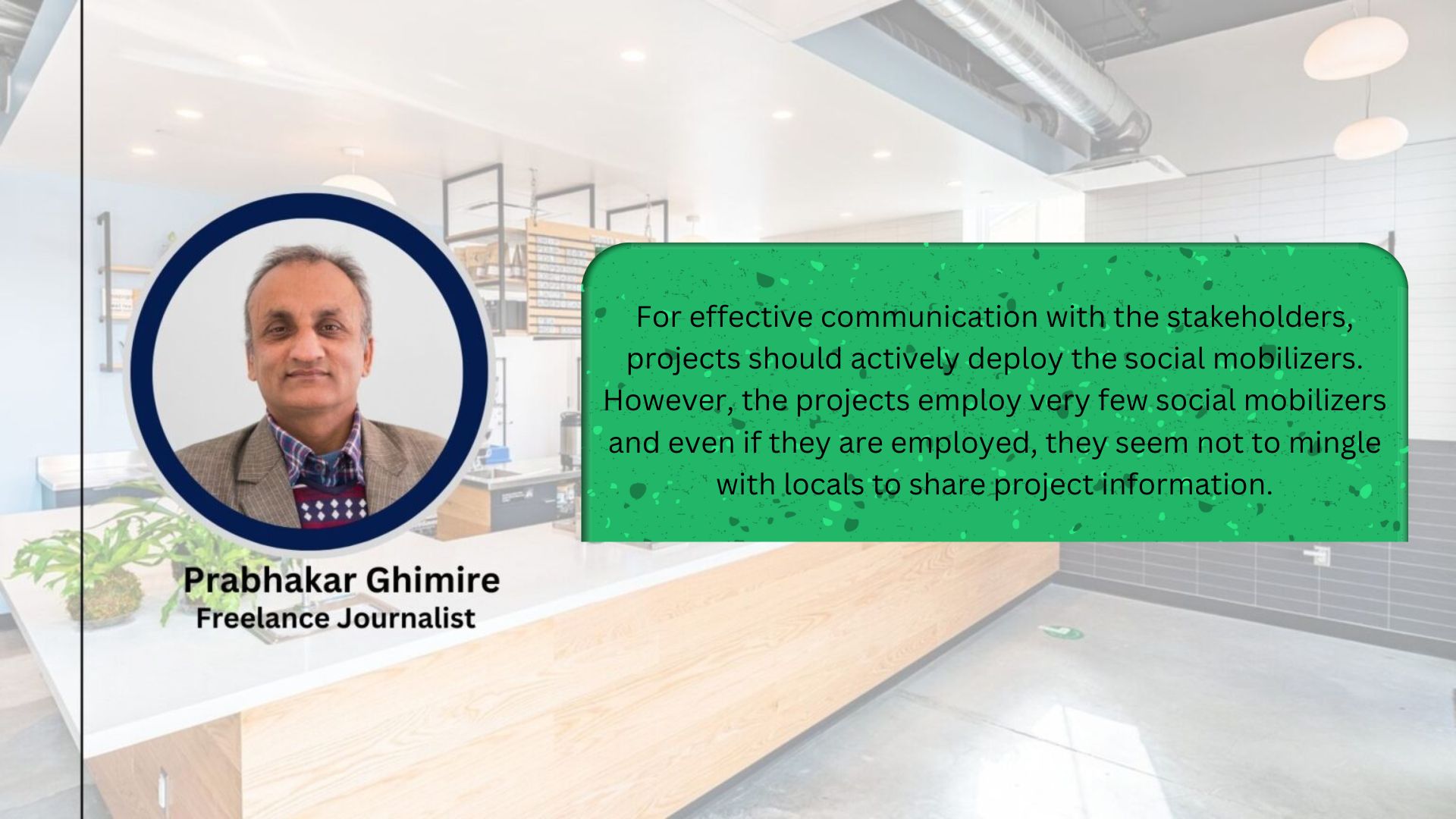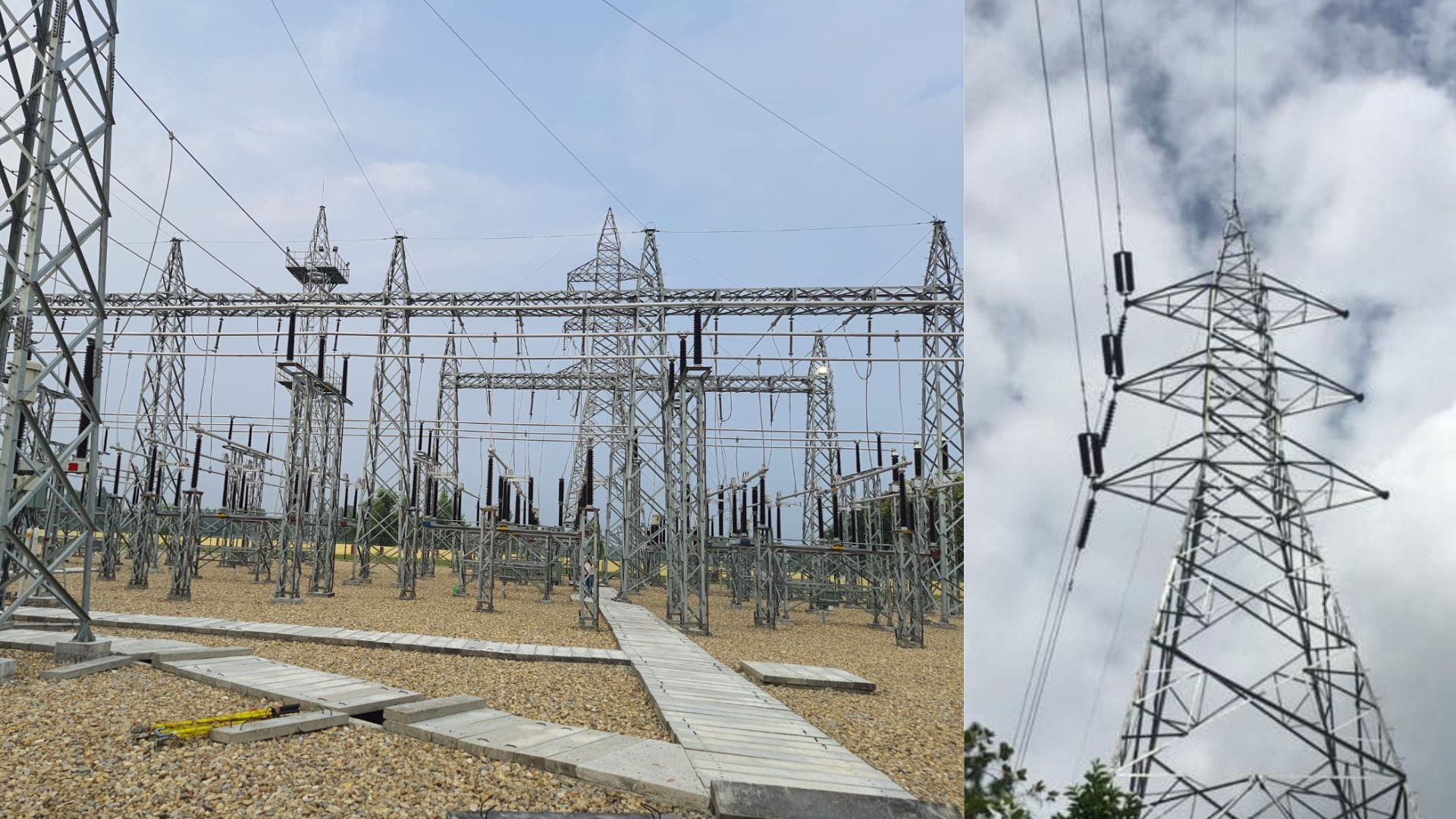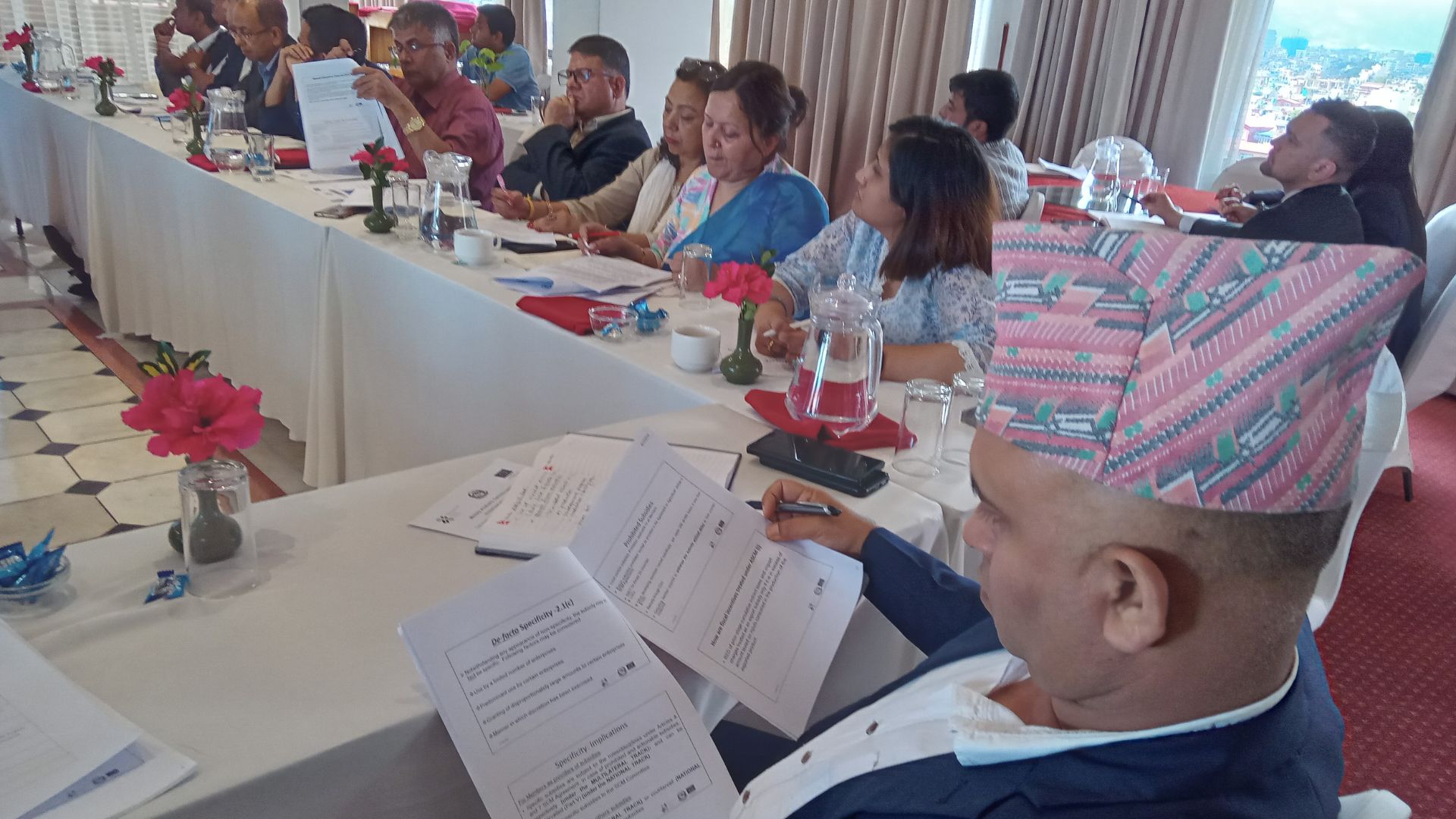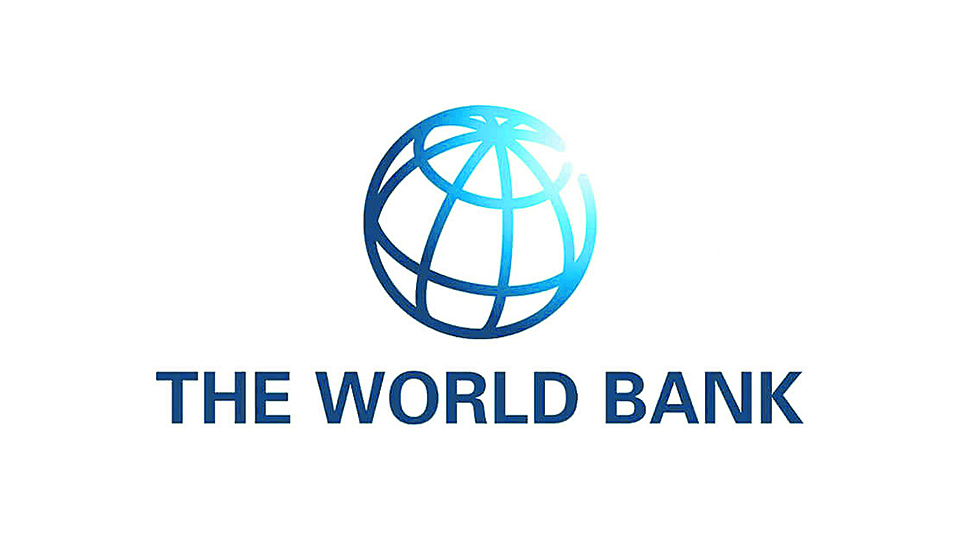
There are many discussions at various public functions and deliberation about the problems facing large scale development projects. Most of the debates are dominated by project financing sources, environmental, human resources,and technical aspects of the projects. But the least discussed issue on development forums is project communication. Except for few people who are directly involved in development and implementation of large-scale projects, most of the policy makers and experts seem not recognizing the significance of proper communication with project stakeholders who hold significant power to impact projects or who are going to be affected or benefitted from the projects. No project developer can afford ignoring relevant stakeholders for smooth implementation of the projects.
Radhesh Pant, who has been closely watching the development and implementation of large infrastructure projects in Nepal for a long time, don’t miss advocating for meaningful consultations with project stakeholders, at every forum he attends. Pant, who is also a former Chief Executive Offer of Investment Board Nepal- the apex body of Nepal government to promote and facilitate large-scale investment, always blames weak communication mechanisms for complications in the process of implementation of big projects which involve multiple stakeholders. Pant had led a series of interactions with stakeholders of projects-investment projects during and after Project Development Agreements (PDAs) of Arun-3 and Upper Karnali Hydropower Projects, in addition to severalstakeholder consultations for other critical projects.
If we go through the history of big projects in Nepal, we often find many examples of implementation delays and cost increases due to a lack of adequate and effective communication between projects and relevant stakeholders about projects’ ongoing and planned activities.
At the same time, I also got the opportunity to directly understand stakeholders’ interests, demands, expectations, and thoughts. Pant, who went to the local level and communicated directly with the stakeholders of other projects under the Investment Board’s mandate, shares the conclusion of his experience – ‘In large projects, many people consider financial resources as the main need, but unless there is support from the concerned individuals, communities and groups or agencies and dialogue with them is given importance, the project cannot move forward seamlessly. In this situation, stakeholders will not be ready to cooperate with projects and the implementation process becomes complicated.
If we go through the history of big projects in Nepal, we often find many examples of implementation delays and cost increases due to a lack of adequate and effective communication between projects and relevant stakeholders about projects’ ongoing and planned activities.
A study conducted in 2013 by the Project Management Institute, a world-renowned research organization on development project management, states that out of every one billion dollars spent on any project, $130.5 million is at risk and 56 percent of the amount at risk which is equivalent to USD 75 million, is at risk due to ineffective communication.
Not only in Nepal but also in other countries of the world, the project developers do not try to seriously address the issues by communicating with the stakeholders. Because of this, there are innumerable examples where the state and the related projects suffered huge financial losses with the increase in cost and time during project development and implementation.
The conclusion of the report is that the most important element of project management is effective communication with stakeholders. The study also pointed out that projects that do not have effective communication systems, have 14 times more risk than those that prioritize communication.
Similarly, a survey conducted by Forbes magazine in 2010 states that 92 percent of company chief executives, 92 percent of communication experts, and 88 percent of strategists admitted that communication is an important element for their strategic success.
Some infrastructure experts have also commented that the biggest problem in project development and implementation in Nepal is raising capital or fund. But it is not a big issue. From Nepal’s perspective, establishing a sense of ownership of the stakeholders in the project and getting their support is a much more complex challenge than raising investment sources. The stakeholders of any development project are not only affected project host communities but also the People’s representatives, political parties, government agencies, development partners, lending banks and financial institutions, policymakers, media, pressure groups, and various non-governmental organizations, who have interest and influences in various forms on the projects.
The concept that organizations should give importance to their stakeholders was introduced in 1984 by Richard Edward Freeman through his book ‘Strategic Management: A Stakeholder Approach’. In the book, he says: ‘Stakeholders are “any group or individual who can affect or is affected by the achievement of the organization’s objectives. “Among stakeholders, some are more concerned, and some are less interested. Stakeholders have their own interests and influence in the project. They also have the right to get information about their concerns in relation to the projects.
But in practice, there is a lack of communication between project parties and stakeholders. If you talk to the project developer or investor, they will complain. They say – ‘Problems have made it difficult to move forward with the project.’ The list of their complaints is at the top – ‘Non-cooperation of stakeholders’. Delays in approvals from government agencies, the politicization of the project by local people’s representatives or political parties, non-cooperation or selfishness of the media, and unusual demands from the local people. Developers of the projects vent grievances that they did not get support from the stakeholders, while stakeholders express concerns that they were not properly communicated about the project. If we analyze it, it seems that projects are giving less importance to stakeholder dialogue making projects more complicated with many issues not resolved in time.
Conflicts between stakeholders and projects are not uncommon, as sometimes stakeholders do not understand the reality,or the project could not share the information properly. For this, efforts should be made to explain to them on behalf of the projects, which seems to be lacking now. Due to some rumors, a negative message about the project can go to the public, but communication strategies on the part of projects do not exist to control negative publicity.
There is an experience of some big projects implemented in Nepal where problems started creeping up and took a complicated form before becoming unmanageable in the later days of the project. Arun 3 hydropower project is an example of creating a sense of belonging to the stakeholders towards the project and getting their support in the implementation. The project practiced conveying a positive and realistic message about the project to the stakeholders from the beginning and give high priority to listening to their interests and inquiries. Even before and after the Project Development Agreement (PDA) of 900 MW Arun 3 project was signed, the people’s representatives, local stakeholder groups, media, water resource experts, relevant government agencies, and other related organizations were engaged through dozens of dialogues and interactions.
Through such forums, the project felt very easy to convey the real message about the project and remove ambiguity. From the process of determining and distributing of the compensation of land acquired by the project to the development of a Resettlement Action Plan (RAP) for the project-displaced people, relevant stakeholders were involved, informed, and engaged properly to ensure their meaningful participation in the decision-making level. Rounds of engagement activities were carried out by the Office of the Nepal Investment Board (OIBN) to bring on board the diverse stakeholders of 900 MW Upper Karnali Hydro Power project. The OIBN has established a dedicated Communication and Stakeholder Engagement Unit to conduct stakeholder engagement activities targeting relevant projects under its purview. The Board of Investment has formed a stakeholder communication unit since the beginning of its establishment, giving importance to stakeholder relations in the execution of large projects within it. Not only before and after the project development agreement, but now also at the implementation stage, through this unit, the dialogues with the stakeholders are being conducted at various levels and stages.
Due to vigorous consultations with diverse stakeholders, even the highly politicized Upper Karnali project secured the buy-in of almost all major stakeholders and succeeded to end the negative public perception. However, public perception about the project developer is due tothe delay in implementation even after nine years since the PDA was signed.
IBN has set a trend of giving high priority to communicating with the project stakeholders through the dedicated communication unit. But such a special unit is not done by other agencies. When talking about stakeholder communication, the 450 MW Upper Tamakoshi project cannot be left out. Local residents and public representatives were not positive about Upper Tamkoshi in the early days. The project prioritized dialogue at different times from stakeholders at different levels to the media. In recent years, the project was able to get positive support from all the stakeholders in the media and now the operation is going on seamlessly.
Due to vigorous consultations with diverse stakeholders, even the highly politicized Upper Karnali project secured the buy-in of almost all major stakeholders and succeeded to end the negative public perception.
But the experience of 1200 MW Budhigandaki hydropower project is different. From the land compensation dispute to the selection of developers, news coverage in mass media is not positive. Efforts from the government to clarify the disputed issues were not nonexistent. Significance of the project for socio-economic development of the project overwhelmed by the negative coverage and rumors.
Because of this, the public perception went negative from the conceptualization of the project. The project’s officials failed to show initiative in providing information to the stakeholders including the media.
Media people are always information hungry. The media people look for alternative sources of information in the absence of sufficient information from the official source. Such clandestine ways of getting information generally lead media people to wrong information that will ultimately impact the accuracy, balance, and credibility of news. Information provided by other groups or individuals other than authentic source can be influenced by their own interests.
A US-funded project under the Millennium Challenge Account faced similar problems due to insufficient communication with relevant stakeholders despite its significance in the infrastructure development of Nepal. Had the project provided adequate information about its benefits and clarified the rumors from the initial days, negative rumors about the project would not have spread unnecessarily. In the case of this project,different interest groups used the media and public forums to spread rumors in different forms and manifestations. However, the project could not put in place strategic communication to ensure a sufficient flow of information to the stakeholder community. The information void set ample space for various interest groups to circulate false information.
These are just a few representative examples. Many projects that are being implemented or are about to be implemented in our country have their own stories where stakeholder communication’s role is vital. Any large-scale project brings in many benefits for that area such as job creation, local business opportunities, revenue for the local level to the federal government, local development, support under Corporate Social Responsibility (CSR), and share of the project for the local people.
The benefits the stakeholders have received or are going to receive from the project are always under-sensitized among them. The term ‘project-affected’ has established a narrative that projects are implemented to affect people. Hence, the term should be replaced with ‘project-benefited’ one so as to establish a positive vibe about the project among stakeholders.
Most of the time, neither the media nor the political parties or people’s representatives explain the positive aspects of the project to their audiences,party workers, or voters. Rather, in some cases, there are many examples of party leaders or people’s representatives encouraging local people to put forth unnecessary demands clearing the ground for creating disruptions in the implementation of the project. To ward off the confusion and negative perception, the officials of the projects don’t seem serious. In the beginning, most of the projects, rather than explaining such things to the people, have taken the policy of ignoring the issues raised by them, covering up the mistakes, and, moving forward with the plan without consulting the stakeholders. Such attitudes toward the project have been making stakeholders angry and non-cooperative.
When some developers are not able to complete the project in line with the contract, instead of trying to explain the reality behind the delay in a transparent manner to the locals, they always knock on the door of the power center for protection.
For effective communication with the stakeholders, projects should actively deploy the social mobilizers. However, the projects employ very few social mobilizers and even if they are employed, they seem not to mingle with locals to share project information.
The delay shown by the developers in the implementation of the projects brews frustration and anger among the locals. But it seems that the developer companies or their contractor companies are adopting non-transparency instead of sharing the facts with the stakeholders. For effective communication with the stakeholders, projects should actively deploy the social mobilizers. However, the projects employ very few social mobilizers and even if they are employed, they seem not to mingle with locals to share project information. Such social mobilizers are supposed to act as a bridge between local stakeholders and the projects.
If the project mobilizes such representatives, confusion and misunderstandings about the project can be removed and harmonious relations can be established between the two parties. Socialmobilizers in some projects, especially foreign investment-based ones, are not locals or even Nepali citizens. In such a situation, they can’t maintain close relations with locals due to differences in culture and languages in local communities. Even a perception that foreign investment projects belong to foreign countries also contributes to the conflict between locals and projects. Projects are found to have not communicated the messages that such projects are registered in Nepal and will function as separate entities to pay tax to the government and contribute to employment and local economic development.
Standards set by the International Finance Corporation, Asian Development Bank, and European Bank emphasize the necessity for adequate and meaningful consultations between projects and relevant stakeholders. Such consultations will ensure informed decisions regarding the project activities and establish a sense of ownership among stakeholders towards the projects.
As the conflict between projects and stakeholders is common in the country, there must be a strong mechanism in place involving projects, local elected representatives, government agencies, project communities, and project developers for facilitation and coordination at the local level. Such an arrangement can work immediately after the problem arises in the project.
Standards set by the International Finance Corporation, Asian Development Bank, and European Bank emphasize the necessity for adequate and meaningful consultations between projects and relevant stakeholders. Such consultations will ensure informed decisions regarding the project activities and establish a sense of ownership among stakeholders towards the projects. Article 28 of the constitution of Nepal and the Right to Information Act have ensured the right of citizens to get information on matters of public interest or personal interest. The Environment Regulations and the Good Governance Act also stipulate that there should be transparent and adequate discussions with the stakeholders through the project life cycle.
Stakeholders extend cooperation to the project officials in the process of project development and implementation of they are involved in decision making process and are provided with sufficient information they need about the project. Projects should give high priority to engage the relevant stakeholders strategically. Priority should be given to those who are highly influential and interested on the project activities while keeping other stakeholders informed and monitored constantly. A local level mechanism involving project representatives and key stakeholders brings together both sides regularly for resolving problems that may emerge.
Such arrangement can also help identifying grievances and concerns of stakeholders at the initial stages before they dent reputation of the project or harm relation between both sides. Project should also prepare and implement a stakeholder relationship strategy to make the relationship with the stakeholders effective. Such strategic document should be reviewed and revised regularly as the stakeholders tend to change over the time as project move ahead. Projects should effectively mobilize social mobilizers that can play role of bridge between the projects and local stakeholders. To properly identify and resolve the grievances of host communities, there must be a grievance redress mechanism through which grievances are collected, analyzed and respond to the stakeholders.
(Ghimire freelance journalist and Project Communication Expert)









